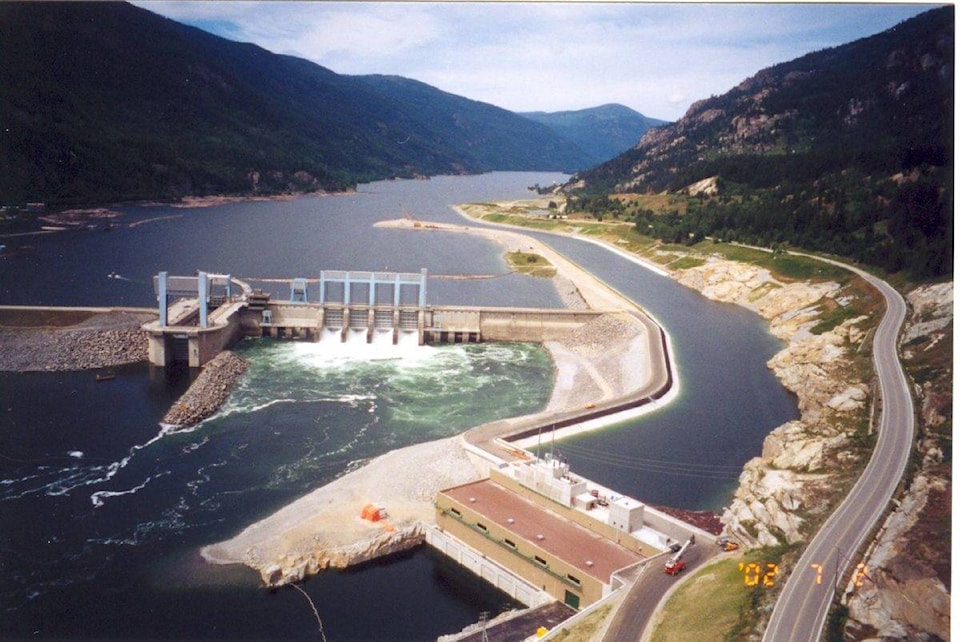Canada and the United States have reached an "agreement-in-principle" to modernize the Columbia River Treaty, a decades-old pact between the two countries that provides flood-risk management and power generation in B.C. and the Pacific Northwest.
The new agreement provides a road map for both negotiating teams to move forward on drafting new treaty terms on core issues and allows for public engagement with residents in the Columbia Basin.
sa���ʴ�ý�The agreement-in-principle is a major milestone that will enable us to now update the Treaty, ensuring continued flood risk management and co-operation on hydropower for the Columbia River and incorporating important provisions not considered in the original agreement, such as ecosystem health and Indigenous cultural values," said Prime Minister Justin Trudeau, in a statement.
"The modernized Treaty will reduce flood risk in communities, advance Indigenous priorities, and promote clean energy goals."
Both countries agree that a modernized treaty will provide flood-risk management and continued cooperation on hydropower generation on the Columbia River.
"In modernizing this treaty, we will elevate U.S. Tribessa���ʴ�ý� and Canadian Indigenous Nationssa���ʴ�ý� voices. Wesa���ʴ�ý�ll re-balance energy coordination between the United States and Canada, allowing the United States to keep more clean hydropower energy at home while giving Canada more opportunities to import from and export to the U.S. market sa���ʴ�ý� critical to both countries achieving our clean energy goals," said U.S. President Joe Biden, in a statement.
"And the United States will benefit from pre-planned water storage at Canadian Treaty dams, to help control flooding and protect vulnerable communities."
New provisions that were not included in the scope of the original treaty include increased unilateral flexibility for how B.C. operates its treaty dams, ecosystem health, restoring and strengthening salmon populations, Indigenous cultural values, adaptive management and new collaborative engagement on Libby Dam operations.
The new provisions are reflective of feedback from Columbia Basin residents, local governments and Indigenous nations for over a decade.
"Modernizing the Columbia River Treaty is a once-in-a-generation chance to look beyond the original treaty's goals of power generation and flood-risk management. We said all along that we would not agree to an updated treaty unless it led to improvements in the B.C. basin and reduced impacts to the region's ecosystems and communities," said Katrine Conroy, B.C. Minister Responsible for the Columbia River Treaty.
Specific items covered through the new agreement include increased domestic flexibility to manage reservoirs levels from treaty dams in B.C. and a reduction in the so-called "Canadian Entitlement" sa���ʴ�ý� Canada's share of the downstream power generation benefits.
Both Canada and the U.S. will annually co-ordinate 15.5 million acre-feet (MAF) of reservoir storage space behind Canadian treaty dams to optimize hydropower generation in both countries. Additionally, Canada can unilaterally decide to reduce the co-ordinated storage to a minimum of 11.5 MAF in each year through 2039, and 10.5 MAF from 2039-2044 for their own domestic purposes.
The agreement also outlines U.S. compensation to Canada for flood risk management; Canada will receive annual payments of $37.6 million (USD) indexed to inflation until 2044. Further, Canada will receive $16.6 million in additional benefits from in the operation of the Canadian reservoirs annually to 2044.
Modernized treaty terms also include significant participation and advocacy from Indigenous Nations in the Columbia Basin, which was non-existent when the original treaty was ratified in 1964,
The agreement calls for the creation of an Indigenous and Tribal-led advisory body that will provide recommendations on how treaty and other hydrosystem operations can better support ecosystem needs and Indigenous and Tribal cultural values, through the lens of a 'One River" approach to ecological health of the Columbia River system.
Additional items include establishing water flows for salmon and better cross-border information sharing, cooperation and coordination for salmon reintroduction efforts,
A multiparty transboundary working group will be formed to work towards addressing common interests in the Kootenay/Kootenai river system such as ecosystems and aquatic objectives, recreation and flood-risk mitigation on both sides of the border.
"The Ktunaxa Nation recognizes this important milestone on reaching an agreement-in-principle concerning a modernized Columbia River Treaty," said Kathryn Teneese, chair of the Ktunaxa Nation Council, in a statement. "While we continue with our sacred duty to protect ? a-kxam̓is q̓api qapsin (all living things), we look forward to continuing to work with Canada, B.C. and our Indigenous Nations partners towards a renewed Columbia River Treaty in which Ktunaxa title, rights and interests are addressed."
The original treaty allowed for the construction of three dams on the B.C. side sa���ʴ�ý� Mica, Keenleyside, and Duncan dams sa���ʴ�ý� as well as the Libby Dam in Montana.
The treaty has no end date but either country can unilaterally terminate the agreement from September 2024 onward, along as at least 10 years notice is given.
The new agreement-in-principle comes after the 19th round of negotiations, as formal talks to modernize the treaty began in 2018.
More information on the agreement-in-principle will be released in the coming weeks as well as opportunities for public consultation and feedback, according to the provincial government.



